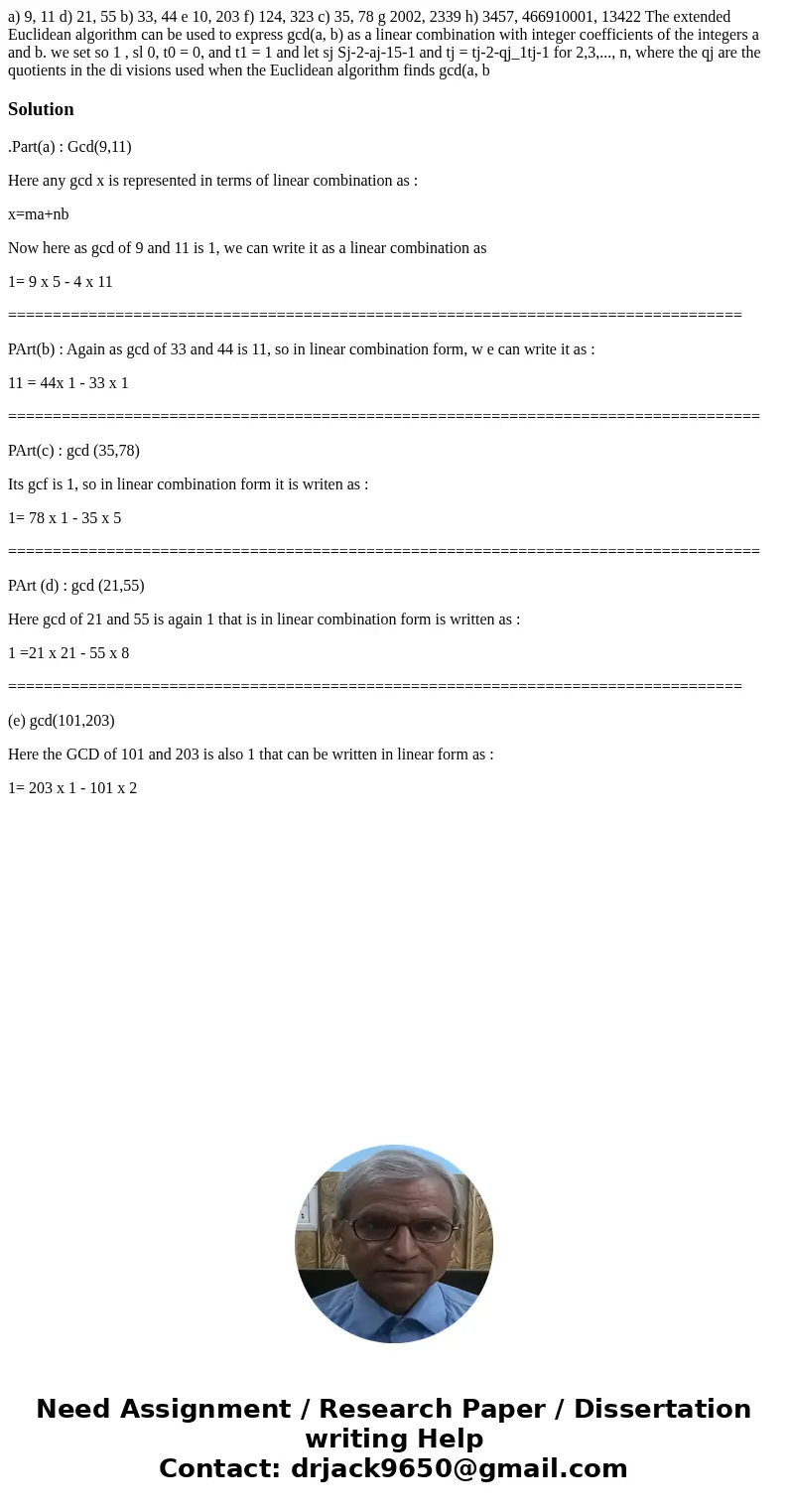a 9 11 d 21 55 b 33 44 e 10 203 f 124 323 c 35 78 g 2002 233
Solution
.Part(a) : Gcd(9,11)
Here any gcd x is represented in terms of linear combination as :
x=ma+nb
Now here as gcd of 9 and 11 is 1, we can write it as a linear combination as
1= 9 x 5 - 4 x 11
==================================================================================
PArt(b) : Again as gcd of 33 and 44 is 11, so in linear combination form, w e can write it as :
11 = 44x 1 - 33 x 1
====================================================================================
PArt(c) : gcd (35,78)
Its gcf is 1, so in linear combination form it is writen as :
1= 78 x 1 - 35 x 5
====================================================================================
PArt (d) : gcd (21,55)
Here gcd of 21 and 55 is again 1 that is in linear combination form is written as :
1 =21 x 21 - 55 x 8
==================================================================================
(e) gcd(101,203)
Here the GCD of 101 and 203 is also 1 that can be written in linear form as :
1= 203 x 1 - 101 x 2

 Homework Sourse
Homework Sourse